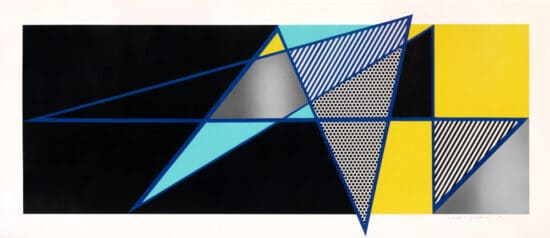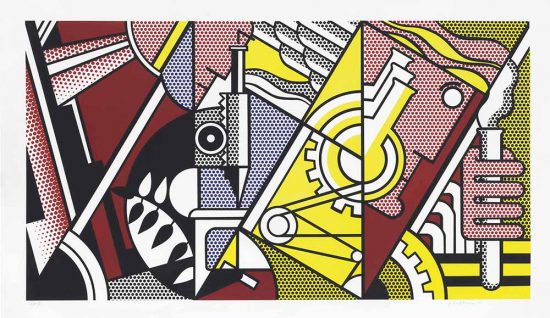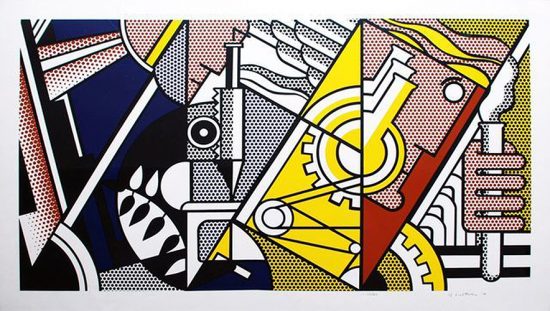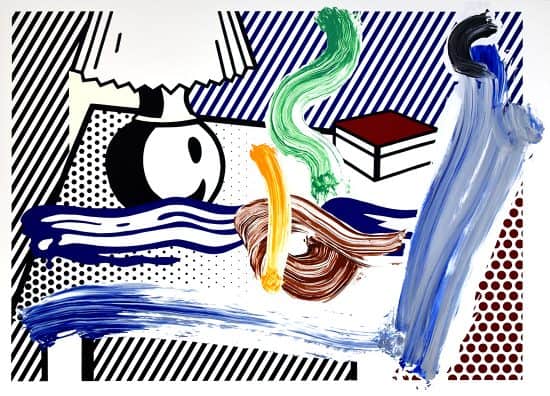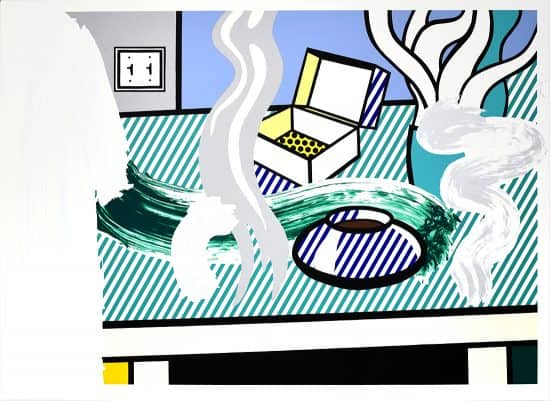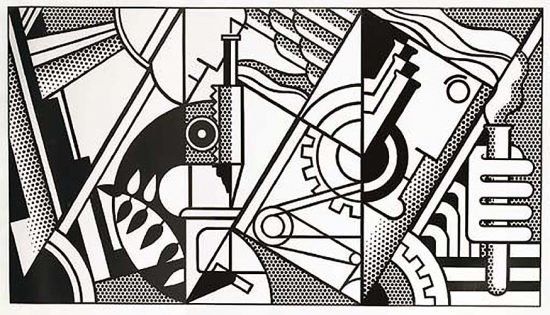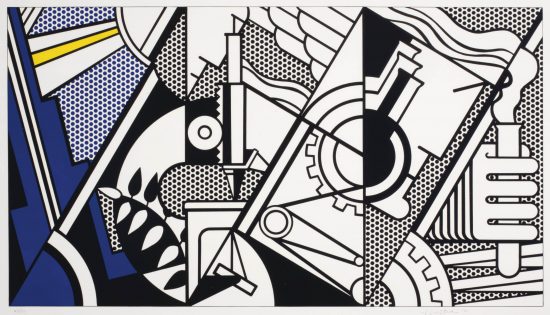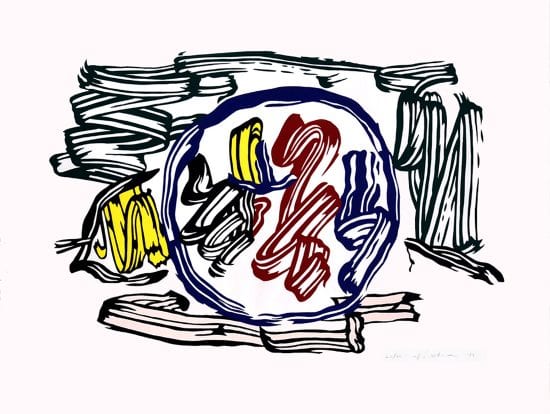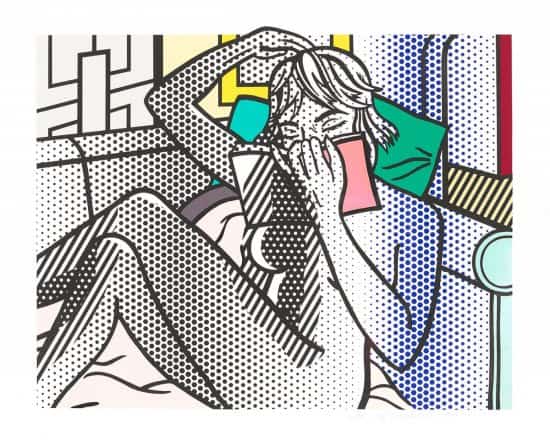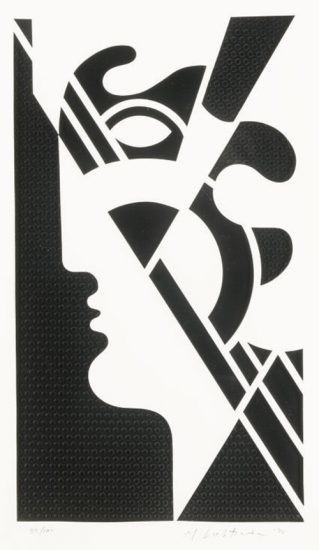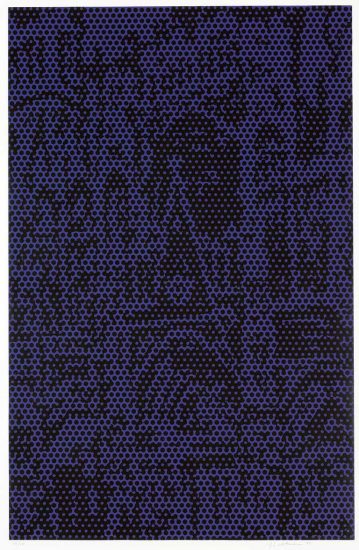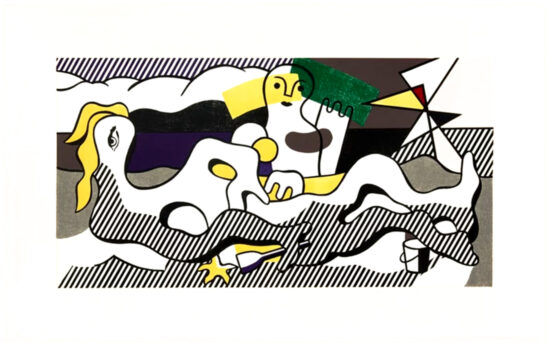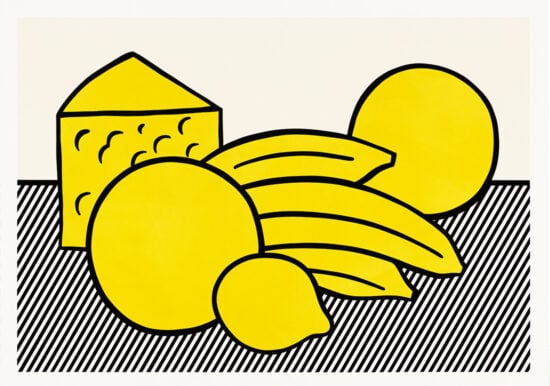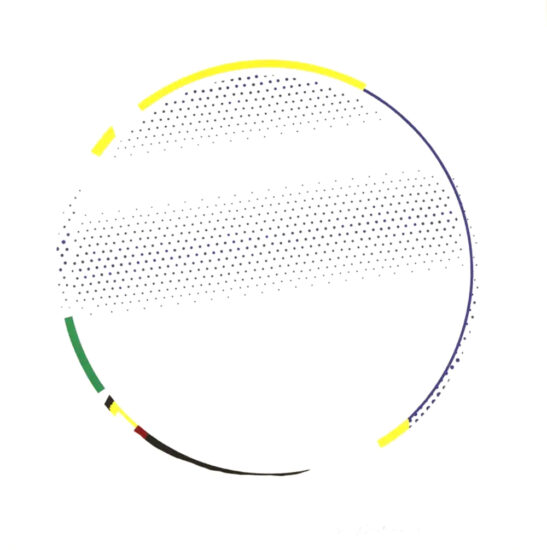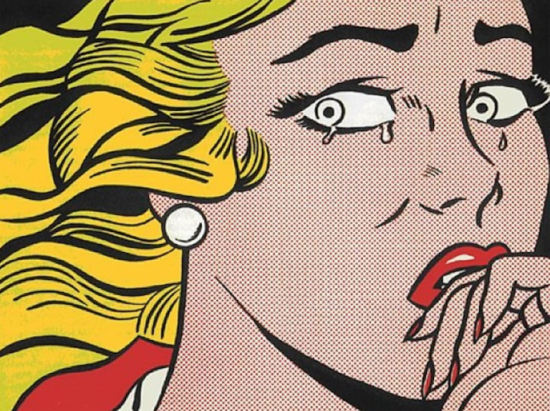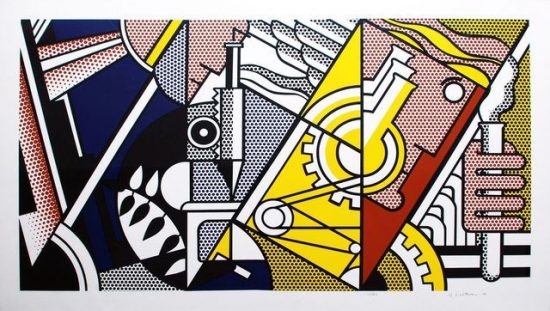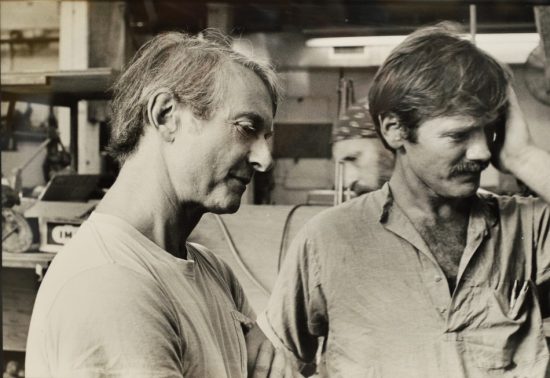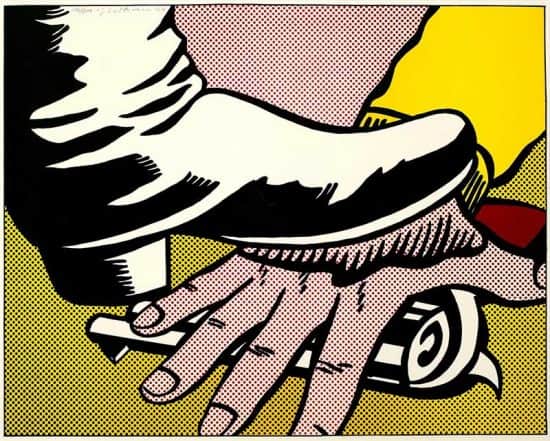What are the best platforms for selling Roy Lichtenstein prints?
The best platforms for selling Roy Lichtenstein prints include online art marketplaces like Masterworks Fine Art Gallery, Saatchi Art, and Etsy. These platforms have a wide reach to art buyers and collectors globally, making them ideal for showcasing and selling prints to a broad audience of art enthusiasts.
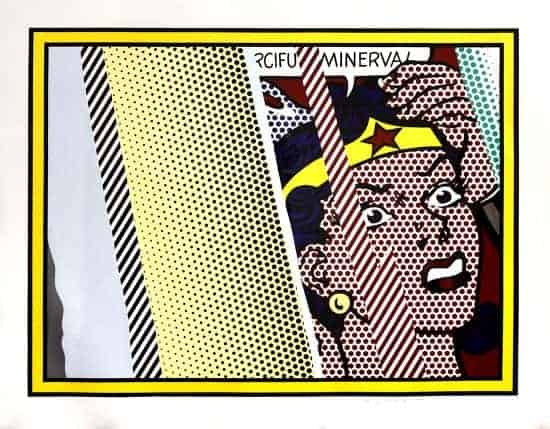
Reflections on Minerva, from Reflections, 1990
Key Highlights
- Roy Lichtenstein is a renowned pop artist known for his iconic prints and paintings.
- The value of Lichtenstein prints in today's art market is influenced by factors such as market trends, the edition of the print, and the authenticity and provenance of the artwork.
- Before selling your Lichtenstein print, it is important to identify the edition and verify its authenticity and provenance.
- Researching the art market and setting the right price are crucial steps in preparing to sell your Lichtenstein print.
- Finding the right platform and creating a compelling listing are essential for attracting potential buyers.
- After finalizing the sale, it is important to manage your profits wisely and understand the tax implications of selling art.
Introduction
Selling art can be an exciting and rewarding experience, especially when it comes to selling prints by renowned artists like Roy Lichtenstein. Lichtenstein was a prominent figure in the pop art movement, known for his bold and vibrant prints inspired by comic books and popular culture. His artworks have become highly sought-after in the art market, making selling his prints a potentially lucrative venture for art collectors and enthusiasts.
However, navigating the art market and successfully selling a Lichtenstein print requires some knowledge and preparation. This guide is designed to provide beginners with a comprehensive overview of the process of selling Roy Lichtenstein prints. From understanding the value of Lichtenstein prints to preparing for the sale and managing the profits, this guide will cover all the essential steps to ensure a smooth and successful selling experience.
Whether you're a seasoned art collector or a beginner looking to sell your first Lichtenstein print, this guide will provide you with valuable insights and practical tips to help you navigate the art market and maximize the value of your artwork. So, let's dive in and explore the world of selling Roy Lichtenstein prints.
Understanding Roy Lichtenstein and His Art
Roy Lichtenstein was a renowned American artist known for his contributions to the pop art movement. He was born in New York in 1923 and studied at the Ohio State University. Lichtenstein's art often featured bold and vibrant imagery inspired by comic books, advertisements, and popular culture. His signature style involved the use of Ben-Day dots, a technique commonly used in printing, to create a unique and visually striking effect in his artworks. Lichtenstein's iconic pieces, such as "Crying Girl" and "Shipboard Girl," have become synonymous with the pop art movement and continue to be highly sought-after by art collectors and enthusiasts.
Who Was Roy Lichtenstein?
Roy Lichtenstein was born in New York in 1923 and went on to become one of the leading figures of the pop art movement. He studied at the Ohio State University, where he developed his artistic skills and began experimenting with different styles and techniques. Lichtenstein's art was heavily influenced by popular culture, comic books, and advertisements. He often used bold colors and Ben-Day dots to create a visually striking effect in his artworks. Lichtenstein's contributions to the pop art movement, along with artists like Andy Warhol and Jasper Johns, revolutionized the art world and continue to inspire artists and art enthusiasts today.
The Pop Art Movement and Lichtenstein's Role
The pop art movement emerged in the 1950s and 1960s as a reaction against the prevailing art establishment and the rise of consumer culture. Artists like Roy Lichtenstein and Andy Warhol challenged traditional notions of what constituted "fine art" by incorporating elements of popular culture into their work.
Lichtenstein's iconic pieces, such as "Crying Girl" and "Shipboard Girl," exemplify his signature style and his role in the pop art movement. These artworks feature bold, graphic imagery inspired by comic books and advertisements. Lichtenstein's use of Ben-Day dots, a printing technique commonly used in mass-produced images, further emphasized the connection between fine art and commercial culture.
By appropriating images from popular culture and recontextualizing them in the realm of fine art, Lichtenstein and other pop artists brought a new perspective to the art world. Their work challenged traditional notions of art and paved the way for a more inclusive and democratized art scene.
The Value of Lichtenstein Prints in Today's Market
The value of Roy Lichtenstein prints in today's art market can vary depending on various factors. Market trends, the edition of the print, and the artwork's authenticity and provenance all play a significant role in determining its value. Lichtenstein's prints have seen appreciation over the years, with many collectors and investors seeing substantial returns on their investments. As the demand for Lichtenstein prints continues to grow, understanding the factors that influence their value is crucial for anyone looking to sell their artwork. In the following sections, we will explore the factors that contribute to the value of Lichtenstein prints and provide tips for maximizing their worth in the market.
Factors Influencing the Value of Prints
The value of Roy Lichtenstein prints is influenced by various factors, including:
- Market trends: The overall demand for Lichtenstein prints and the current state of the art market can impact their value. Keeping an eye on market reports and staying informed about the latest trends can help sellers determine the right time to sell.
- Edition of the print: The edition size of a Lichtenstein print can also affect its value. Prints from smaller editions or artist proofs tend to be more valuable than those from larger editions.
- Artwork's significance: The significance of a particular Lichtenstein print, such as its inclusion in major exhibitions or its association with iconic works like "Whaam!" or "Nude with Blue Hair," can also impact its value.
- Retrospective value: Prints from Lichtenstein's earlier periods or those that represent key themes and techniques from his career may hold higher value due to their historical significance.
By considering these factors and staying informed about the market, sellers can make informed decisions about pricing their Lichtenstein prints and maximizing their value in today's art market.
Notable Sales and Auction Records
Roy Lichtenstein paintings and prints have fetched significant prices at auctions and private sales, reflecting their desirability and value in the art market. Notable sales and auction records include:
- "Masterpiece" (1962) - Sold for $165 million in 2017, setting a record for the highest price ever paid for a Lichtenstein artwork.
- "Whaam!" (1963) - Sold for $95.4 million in 2019, establishing a new auction record for a Lichtenstein painting.
- "Nude with Blue Hair" (1994) - Sold for $878,804 in 2023, highlighting the continued demand for Lichtenstein's iconic comic book-inspired imagery.
These record-breaking sales demonstrate the enduring appeal and value of Lichtenstein prints in the art market. The following table provides a summary of some notable sales and auction records for Roy Lichtenstein prints:
| Artwork | Sale Price | Date | Auction House |
| "Masterpiece" | $165 million | 2017 | Christie's |
| "Whaam!" | $95.4 million | 2019 | Sotheby's |
| "Nude with Blue Hair" | $878,804 | 2023 | Phillips |
These high prices reflect the value and demand for Lichtenstein prints in today's art market, making them a desirable choice for collectors and investors alike.
Preparing to Sell Your Lichtenstein Print
Before selling your Roy Lichtenstein print, it is essential to prepare and gather the necessary information to attract potential buyers and maximize its value. The following steps will help you in preparing to sell your Lichtenstein print:
- Identify the edition: Determine the edition size and number of your Lichtenstein print. This information will be crucial for buyers and collectors.
- Verify authenticity and provenance: Ensure that your Lichtenstein print is authentic by verifying its provenance and authenticity through documentation and expert advice.
By taking these steps, you can ensure that you have all the necessary information to present your Lichtenstein print to potential buyers confidently.
Identifying Your Print's Edition
Identifying the edition of your Roy Lichtenstein print is crucial for both buyers and sellers. The edition size and number can significantly impact the value and desirability of the artwork. Here are some key points to consider when identifying your print's edition:
- Edition size: Lichtenstein prints are typically produced in limited editions, ranging from a few dozen to a few hundred prints. Smaller edition sizes generally command higher prices and are more sought-after by collectors.
- Numbering: Each print within an edition is numbered, typically displayed as fractions on the bottom left corner of the artwork. The top number indicates the print's individual number, while the bottom number represents the total edition size.
- Printing process: Lichtenstein's prints were often produced using various printing techniques, such as lithography or screen printing. Understanding the specific printing process used for your print can help determine its authenticity and value.
By identifying the edition and understanding its significance, you can provide potential buyers with essential information about your Lichtenstein print and maximize its value in the market.
Verifying Authenticity and Provenance
Verifying the authenticity and provenance of your Roy Lichtenstein print is crucial to ensure its value and appeal to potential buyers. Here are some steps to help you verify the authenticity and provenance of your print:
- Expert consultation: Seek the advice of experts and appraisers who specialize in Lichtenstein's work. They can examine your print, assess its authenticity, and provide you with a certificate of authenticity.
- Provenance research: Investigate the history of your Lichtenstein print to establish its provenance. Look for any supporting documentation, such as receipts, exhibition catalogs, or previous ownership records.
- Collateral research: Compare your print with authenticated examples of Lichtenstein's work. Look for specific characteristics, such as the use of Ben-Day dots or the artist's signature, to ensure its authenticity.
By taking these steps to verify the authenticity and provenance of your Lichtenstein print, you can provide potential buyers with confidence in the artwork's value and legitimacy.
Beginner’s Guide to Selling Roy Lichtenstein Prints
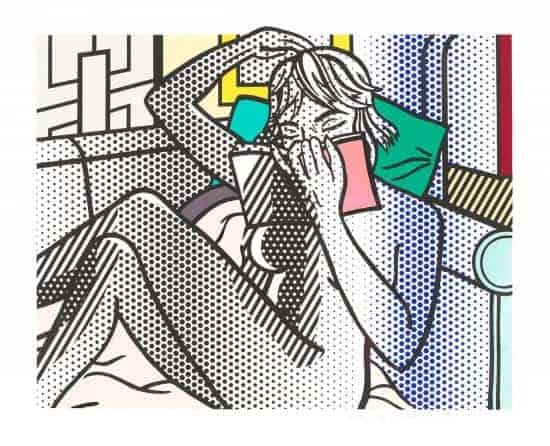
Nude Reading, from Nudes, 1994
Selling Roy Lichtenstein prints can be a rewarding experience for beginners looking to enter the art market. However, it is essential to understand the process and take the necessary steps to maximize the value of your artwork. This beginner's guide will walk you through each step of selling your Lichtenstein print, from researching the market and setting a price to finding the right platform and handling inquiries. By following this guide, you can navigate the selling process with confidence and achieve a successful sale of your Lichtenstein print.
Necessary Resources and Equipment
Before selling your Roy Lichtenstein print, it is important to gather the necessary resources and equipment to facilitate the selling process. Here are some essential resources and equipment you may need:
- Art valuation services: Seek the assistance of professional art valuation services to determine the current market value of your Lichtenstein print. These services can provide you with an accurate estimate of your artwork's worth, helping you set a competitive price.
- High-quality photography equipment: Invest in good photography equipment to capture high-resolution images of your Lichtenstein print. Clear and detailed photographs are crucial for attracting potential buyers and showcasing the artwork's condition.
- Packaging and shipping supplies: Ensure you have the necessary packaging materials, such as acid-free sleeves and sturdy shipping boxes, to protect your Lichtenstein print during transit. Additionally, consider insurance options to safeguard against any damage or loss during shipping.
By preparing these resources and equipment in advance, you can streamline the selling process and present your Lichtenstein print in the best possible light.
Step 1: Researching the Market
Before listing your Roy Lichtenstein print for sale, it is important to research the current state of the art market. Understanding market trends and prices will help you determine the right time to sell your artwork and set a competitive price. Here are some steps to research the market:
- Market reports: Consult art market reports and publications to gain insights into recent sales and trends in the Lichtenstein print market. These reports can provide valuable information on demand, pricing, and market conditions.
- Auction results: Monitor auction results for Lichtenstein prints to gauge the current market value. Note the sale prices and edition numbers of similar prints to help determine your own pricing strategy.
- Gallery exhibitions: Visit galleries and exhibitions showcasing Lichtenstein's work to get a sense of the current interest and demand for his prints. Take note of the artworks on display and their respective prices.
By conducting thorough market research, you can make informed decisions about pricing and timing when selling your Roy Lichtenstein print.
Step 2: Setting a Price
Setting the right price for your Roy Lichtenstein print is crucial for attracting potential buyers and maximizing its value. Here are some factors to consider when setting a price:
- Art valuation: Consult professional art valuation services to determine the current market value of your Lichtenstein print. Take into account factors such as the edition size, condition, and the artwork's significance within Lichtenstein's oeuvre.
- Recent sales: Look at recent sales of Lichtenstein prints with similar characteristics to yours. Consider the sale prices of comparable prints to help gauge the market value and set a competitive price.
- Art market trends: Take into account the current trends in the Lichtenstein print market. If there is high demand and limited supply, you may be able to set a higher price. Conversely, if the market is saturated, you may need to adjust your price accordingly.
By considering these factors and conducting thorough research, you can set a price that reflects the value of your Lichtenstein print and attracts potential buyers.
Step 3: Finding the Right Platform
Finding the right platform to sell your Roy Lichtenstein print is essential for reaching potential buyers and maximizing its exposure. Here are some options to consider:
- Online marketplaces: Platforms like eBay and other online marketplaces offer a wide reach and potential access to a large audience of art collectors. However, be prepared to handle the logistics of packaging and shipping the artwork.
- Consignment galleries: Consignment galleries can handle the selling process on your behalf, promoting your Lichtenstein print to their network of collectors. They typically charge a commission fee on the sale price.
- Auction houses: Selling through auction houses like Phillips can provide exposure to a global audience of art buyers. However, be prepared for potential fees and a longer timeline for the sale.
By evaluating these platforms and considering your specific needs and goals, you can choose the best option for selling your Roy Lichtenstein print.
Step 4: Creating a Compelling Listing
Creating a compelling listing for your Roy Lichtenstein print is crucial for attracting potential buyers and standing out in a competitive market. Here are some tips for creating an effective listing:
- High-quality images: Include clear, high-resolution photographs of your Lichtenstein print that accurately represent its colors, details, and condition.
- Detailed description: Provide a thorough and accurate description of your print, including information about the edition, provenance, condition, and any notable features or characteristics.
- Artistic context: Provide background information about Lichtenstein's work and the significance of your print within his oeuvre. Highlight any relevant exhibitions, publications, or notable sales.
- Pricing and contact information: Clearly state the price you are asking for your Lichtenstein print and provide contact information for potential buyers to reach out to you.
By creating a well-crafted and informative listing, you can attract the attention of potential buyers and increase the chances of a successful sale.
Step 5: Handling Inquiries and Negotiations
Once your Roy Lichtenstein print is listed for sale, you may start receiving inquiries and engaging in negotiations with potential buyers. Here are some tips for handling inquiries and negotiations:
- Prompt responses: Respond to inquiries in a timely manner to maintain potential buyers' interest and show your commitment to the selling process. Consider setting up an email account specifically for inquiries related to the sale.
- Professional communication: Maintain a professional and courteous tone in all communications with potential buyers. Provide accurate information about the artwork and answer any questions they may have.
- Negotiation strategy: Be prepared to negotiate the price, but have a clear understanding of your minimum acceptable price. Consider factors such as the demand for your print and comparable sales to guide your negotiations.
By effectively handling inquiries and negotiations, you can build trust with potential buyers and increase the chances of a successful sale.
Step 6: Finalizing the Sale and Shipping
Once you have reached an agreement with a buyer, it is important to finalize the sale and ensure a smooth shipping process for your Roy Lichtenstein print. Here are some steps to follow:
- Payment and paperwork: Ensure that payment is securely processed before proceeding with the shipping. Prepare any necessary paperwork, such as a bill of sale or certificate of authenticity, to accompany the artwork.
- Packaging and shipping: Use appropriate packaging materials to protect your Lichtenstein print during transit. Consider using a professional art shipping service to ensure safe and secure delivery.
- Authenticity and provenance documentation: Include any relevant documentation about the authenticity and provenance of the artwork in the shipment. This will provide the buyer with confidence in the legitimacy of the print.
By carefully finalizing the sale and ensuring proper shipping, you can complete the selling process and deliver your Roy Lichtenstein print to its new owner.
Frequently Asked Questions
How do I know if my Lichtenstein print is authentic?
Authenticating a Lichtenstein print requires expert advice and careful examination of the artwork's provenance and characteristics. Consult with art experts, appraisers, and specialists familiar with Lichtenstein's work to verify the authenticity of your print.
Can I sell a print without provenance?
While provenance can enhance the value and desirability of a Lichtenstein print, it is not always a prerequisite for selling. However, potential buyers may value provenance as it provides assurance of the artwork's authenticity and history. Providing as much information as possible about the print's origin and ownership can help instill confidence in potential buyers.
What are the best platforms for selling high-value art prints?
There are several platforms available for selling high-value art prints, including online marketplaces like eBay, consignment galleries, and auction houses like Phillips. Each platform has its own advantages and considerations, so it's important to choose the one that aligns with your selling goals and the specific characteristics of your Lichtenstein print.


